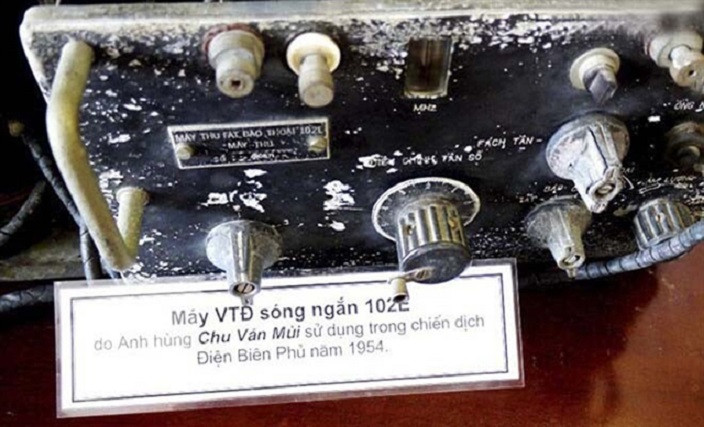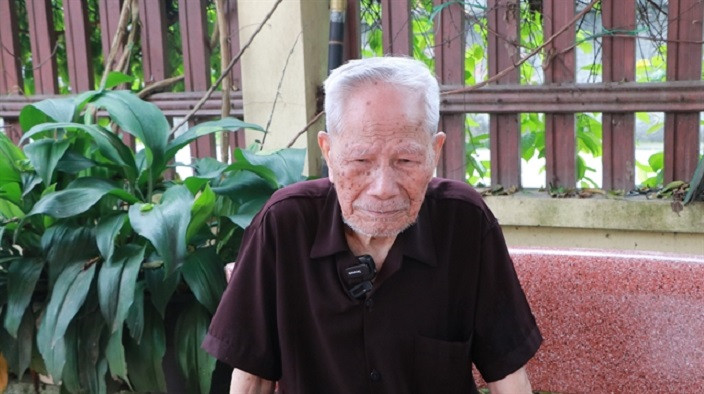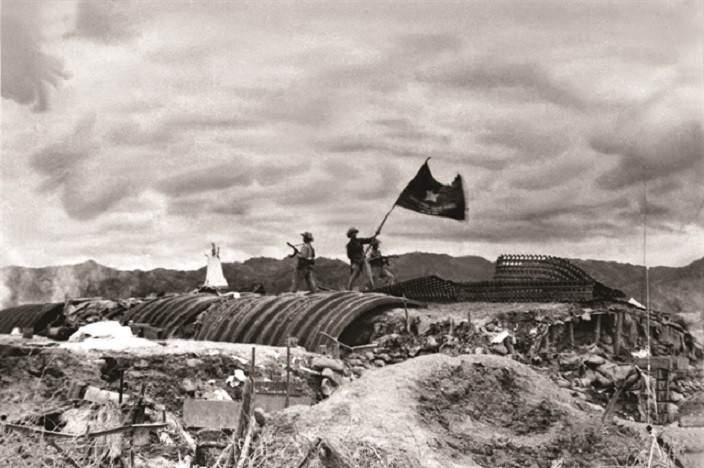
In the spring of 1954, the Battle of Điện Biên Phủ raged in northwestern Việt Nam as Việt Minh, or the Vietnamese Resistance forces, besieged French troops entrenched in a valley surrounded by mountains.
Among the fiercest fights was the assault on Hill A1 (identified as Strongpoint Eliane 2 by the French), a heavily fortified outpost that General Võ Nguyên Giáp [commander-in-chief of the Vietnam People's Army] described as "the key" to breaking the French "Hedgehog".
Chu Văn Mùi, a veteran radioman and a war hero, recounts the fierce assault in which he played a crucial role.
The second phase of Việt Minh's military campaign at Điện Biên Phủ began on the night of March 30, 1954, as Vietnamese troops attacked five strongholds east of the French headquarters.
The 174th Regiment of the 316th Division was tasked with capturing the strongest of the five, Hill A1, an outpost of vital strategic importance.
The fight was fierce, with French troops in underground bunkers and supported by artillery and aerial bombardments.
By March 31, Vietnamese troops had captured half of Hill A1 but then lost communication with their division commanders due to severely broken telephone lines.
That's when Mùi was immediately dispatched to reinforce the 174th Regiment. He and another radioman braved intense enemy shelling to reach Hill A1 and re-establish contact using their radio transceiver.
"In the evening, our troops on Hill A1 lost communication with their commanding post," Mùi said. "Comrade Đức and I urgently brought our radio transceiver, a US-made 102E, to Hill A1 to restore connection."

Under relentless fire, the two radiomen maintained the communication link and transmitted vital info that helped Vietnamese artillery repel many waves of French counterattacks.
On the night, the 102nd Regiment (under the 308th Division) and the remaining 174th Regiment launched the second assault on Hill A1. They quickly seized the lower defensive positions on the hill.
The French troops were forced back to the hilltop and retreated into underground bunkers.
"At around 2am, we attacked the hilltop, but the communication link up there with our commanding post was very bad," Mùi said.
Mùi fearlessly crossed a heavy artillery barrage, carrying his radio transceiver to the hilltop to restore communication.
By the morning of April 1, Vietnamese forces had controlled two-thirds of Hill A1 but could not expand their footholds.
The French attempted to retake Hill A1 with two tanks and reinforced troops. Mùi called the artillery for support: "Two customers are leading two cows into the coffee shop" (meaning two enemy companies with two tanks begin counterattack).
Guided by Mùi's info about the enemy's coordinates, the artillery blasted huge holes in their ranks, disabling their fighting power.
"A tank rushed to the top and fired heavily at our troops," Mùi said. "An anti-tank soldier fired a shot, and the tank immediately was engulfed in fire."
Three waves of failed counterattacks cost the French hundreds of troops. The two sides settled into a stalemate.
On the night of April 1, Vietnamese forces launched the third attack but were pushed back. Radioman Đức was killed that night, leaving Mùi alone to operate the vital link while also fighting off the French.
The next day, the headquarters lost contact with regiment commander Hùng Sinh. Through the radio, a general ordered Mùi to locate him.
"I hadn't eaten for a day," Mùi said. "But I strapped on the 20kg transceiver and went to find Comrade Sinh with my last ounce of strength."
After an intense search in the raging battle, he found Sinh wounded on the frontline. The commander was ordered to withdraw from the hill for medical treatment but insisted on remaining in the fight.
As reinforcements arrived the next day, Mùi and Sinh returned to the hilltop to drive back French counterattacks. The two sides fought each other in a bloody stalemate for over a month.
Facing the unwavering resistance of the French garrison on Hill A1, the 174th Regiment took an alternative plan to break through the stronghold. An engineering team was assembled to dig a tunnel towards the French underground bunkers to plant explosives.
The soil at Hill A1 was extremely hard. On the first day, the team could only carve 90cm into the rocky slope. French troops rained down gunfire and grenades, wounding three sappers and knocking the team leader unconscious.
Despite the difficulties, the team managed to complete the tunnel on May 5. During the night, a tonne of explosives was placed directly beneath the French underground bunkers.
The next evening, after the Vietnamese forces in Hill A1 received the order to regroup in Hill Cháy, 250m away, the explosives were detonated, blasting the bunkers to rubble.
Vietnamese troops quickly captured the hill. The French deployed two squads and a tank in a final attempt to retake Hill A1 but to no avail.

With the fall of Hill A1, an outpost just 300m away from the French headquarters, French resistance collapsed. Vietnamese forces planted their victory flag over Gen de Castries's headquarters on May 7.
"French troops held out stubbornly on Hill A1, only losing it on the last day of the battle," said Mùi.
The 56-day and night siege of Điện Biên Phủ ended in a decisive French defeat leading to the Geneva Accord restoring peace in Indochina. But victory came at a tremendous cost, with the brutal struggle for Hill A1 exemplifying the sacrifice required to prevail against colonial forces.
For his significant contributions to the Điện Biên Phủ Campaign, Mùi was honoured as a "Hero of the People's Armed Forces" in 1955. — VNS